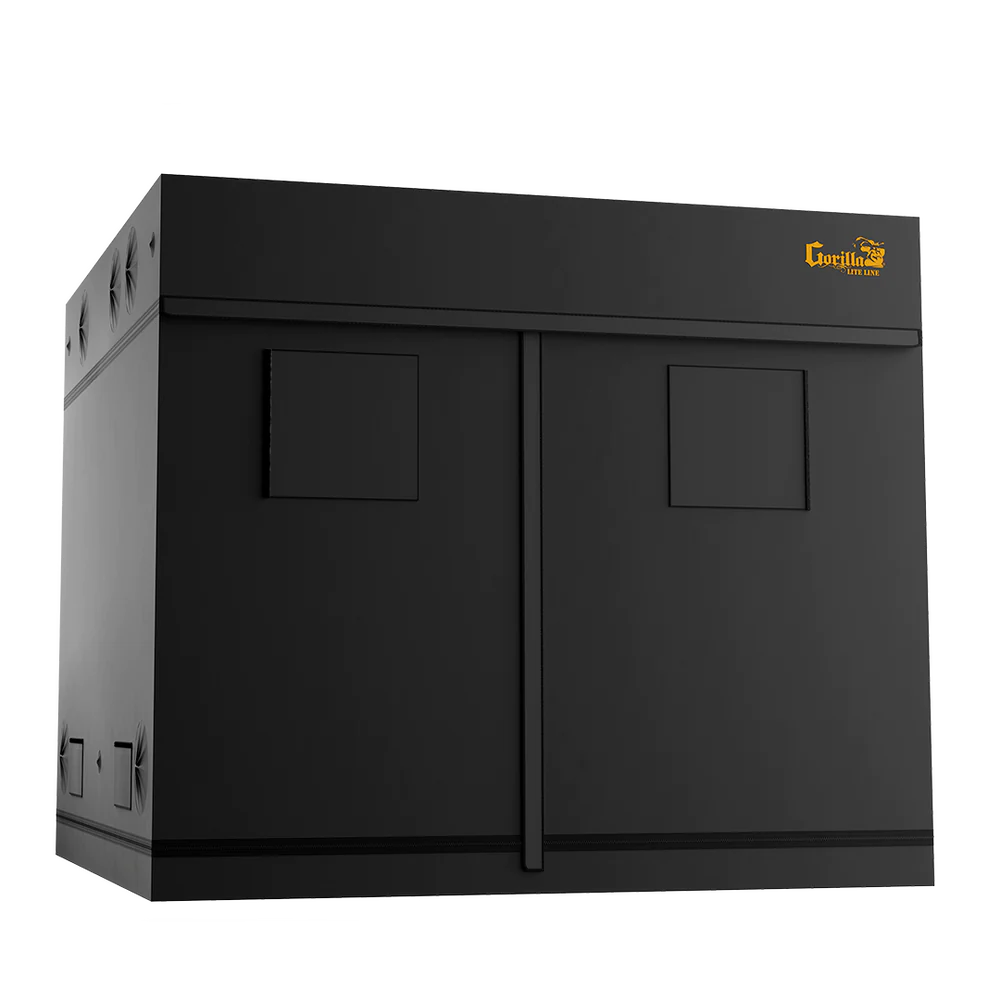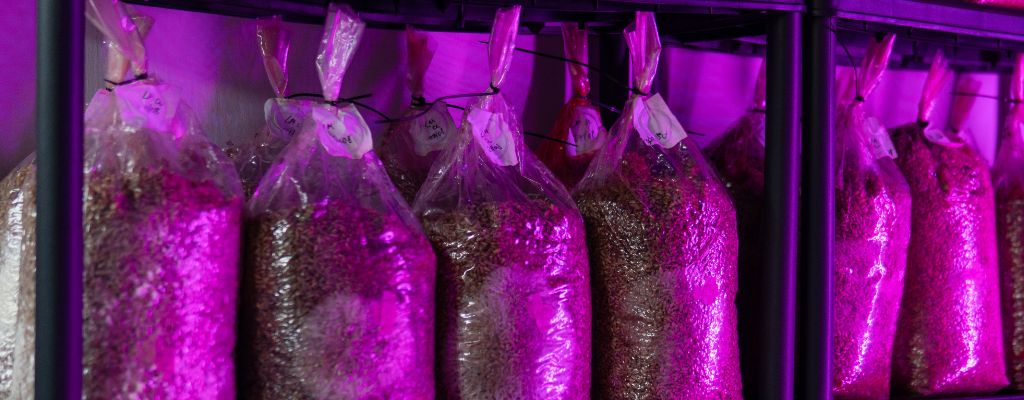When it comes to setting up a mushroom grow tent, selecting the right equipment is paramount to your success. Let’s break down the essentials and consider some additional tips to get you started.

The Foundation: Your Grow Tent
The grow tent is essentially the home where your mushrooms will develop. When choosing a grow tent, consider:
- Brand: You want to chose a brand that is cost-effective and high quality. We recommend Gorilla Grow Tents for all your needs.
- Size: The size of your tent should correspond to the amount of space you have available and how many mushrooms you plan to grow. Remember, your mushrooms need room to breathe, so don’t overcrowd them.
- Material: Look for durable, reflective materials that will help maintain consistent temperature and humidity levels.
Nourishing Your Fungi: Grow Medium and Spores
- Grow Medium: This is where your mushrooms will live and grow. Each species may require a different type of medium, with options ranging from straw and wood chips to specialized mushroom soils.
- Mushroom Spores/Mycelium: Spores are like seeds for mushrooms, while mycelium is the vegetative part of the fungus. You can purchase ready-to-go spawn bags or kits to make starting even easier.
Let There Be Light: Grow Lights
- Type: While mushrooms do not photosynthesize, they do require some light for proper growth orientation. Full-spectrum LED lights are energy-efficient and emit a broad light spectrum without excessive heat.
- Intensity: The light should be gentle and indirect, mimicking the dappled light found in a forest.
Shelving: Your Mushroom’s Staging Area
- Material Choice: Durability and resistance to humidity are key. Plastic shelving is rust-proof and lightweight, while metal shelving is sturdy and can support more weight, but may require more maintenance to prevent rusting.
- Configuration: Adjustable shelving is a plus, as it allows you to modify the space according to the growth stage and size of your mushrooms.
With these considerations in mind, you’ll be well-equipped to create a thriving environment for your mushrooms. Remember, research is your friend — understanding the specific needs of the mushroom species you’re growing will guide you in making the best equipment choices.

Crafting the Perfect Environment for Mushroom Cultivation
Creating an ideal environment within your grow tent is crucial for nurturing healthy mushrooms. Here’s how to fine-tune your setup:
Temperature: The Warm Embrace
- Consistency is Key: Fluctuations in temperature can stress your fungi. Use a digital thermometer to monitor and maintain a steady range that’s conducive to mycelial growth and fruiting.
- Species-Specific Needs: Different mushrooms have varying temperature preferences. Research your chosen species to tailor the environment accordingly.
Humidity: The Fountain of Growth
- Moisture Mastery: Mushrooms are about 90% water, so maintaining high humidity is essential. Aim for 90-95% for most species, but always verify based on what you’re growing.
- Equipment: A hygrometer will help you keep a close eye on moisture levels. Choose a reliable humidifier that can maintain the necessary humidity without over-saturating the air, which could lead to mold.
Air Circulation: The Breath of Life
- Fresh Air Exchange: Mushrooms consume oxygen and emit carbon dioxide, much like us. To prevent CO2 buildup, ensure your tent has a vent or use an inline fan to exchange the air periodically.
- CO2 Monitoring: Keep tabs on CO2 levels with a meter to ensure they stay below 1000 ppm, which is beneficial for most mushroom types.
Light: Gentle Rays to Guide Growth
- Indirect and Gentle: Mushrooms use light as a signal for growth direction rather than nourishment. Use diffused lighting to prevent drying out the delicate mycelium.
- Daily Cycles: Automate your lighting with timers to simulate natural day-night cycles, usually a few hours of light per day is sufficient.
Ventilation: A Gentle Breeze
- Preventing Stagnation: A stagnant environment can be detrimental. Small oscillating fans can help replicate a natural breeze, encouraging strong and healthy growth.
- Balance: It’s a delicate dance between too much and too little air movement. Aim for just enough to gently rustle the leaves of your mushrooms.
By giving attention to these environmental factors, you can create a micro-climate within your grow tent that mimics the natural habitats where mushrooms flourish. This attention to detail will reward you with a bountiful harvest of mushrooms, ready for the kitchen or market.
Monitoring and Observation
You don’t need to be a mushroom babysitter, but you do need to check on them:
- Observation Windows: If your tent isn’t clear, windows can help you peek at your growing mushrooms without disturbing them too much.
Making Life Easier with Automation
To simplify the process:
- Automation Tools: Use a thermostat and humidity controllers to manage the environment automatically. Timers for lights will help maintain a consistent light schedule.
Dealing with Extreme Climates
If you’re dealing with particularly hot or cold conditions:
- Temperature Modifiers: An air conditioner or heating mats may be necessary to maintain the ideal temperature for your mushrooms.
Conclusion
Growing mushrooms in a tent is a fun and rewarding project that doesn’t require a green thumb, just a bit of preparation and care. With the right setup and conditions, you’ll be on your way to harvesting your own delicious mushrooms in no time!
Remember, each mushroom species is unique, so tailor your setup to the specific varieties you’re growing. Happy mushroom farming!


